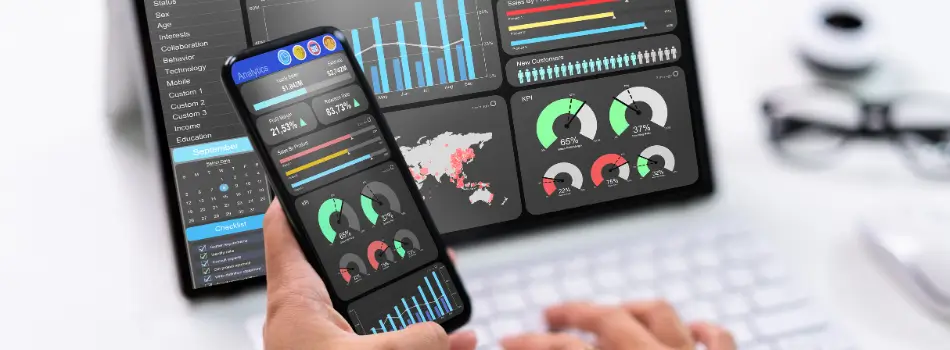Digital KPIs are essential for any business aiming to thrive in today’s fast-paced online world. Understanding how your digital efforts translate into results is crucial. These guiding metrics help businesses measure the effectiveness of their campaigns and strategies. Without these indicators, navigating the complex digital landscape would be like sailing without a compass. This article dives deep into the key digital KPIs you must track to sharpen your decisions, optimize performance, and ultimately accelerate growth.
Digital KPIs: Why They Matter More Than Ever
Tracking progress isn’t just a business habit; it’s the backbone of successful digital marketing. Digital KPIs provide measurable benchmarks, allowing teams to assess if their efforts are working or need adjustment. They create a clear link between strategy and results, enabling better resource allocation and enhanced ROI. By focusing on the right KPIs, companies can pinpoint strengths, uncover weaknesses, and pivot swiftly in response to market changes.

Digital KPIs in Website Performance: Measuring What Counts
Your website is the digital storefront, and certain KPIs reveal its health and user experience quality. Metrics such as bounce rate, average session duration, and page load speed offer insights into visitor behavior. A high bounce rate might indicate irrelevant content or poor usability, while longer sessions usually suggest engaging material. Monitoring these figures regularly ensures your site keeps visitors interested and encourages action.
Bounce Rate and Its Implications
A bounce occurs when a visitor leaves after viewing only one page. Understanding the bounce rate highlights whether visitors find your landing pages relevant and compelling. Improving this KPI often involves enhancing content clarity and navigation.
Average Session Duration as a Quality Indicator
The time users spend on your site reflects engagement levels. Longer sessions tend to correlate with greater interest and trust, essential for conversions.
Page Load Speed Impact on User Retention
Slow loading times frustrate users and drive them away. Optimizing this metric improves user satisfaction and search engine rankings alike.

Digital KPIs for Social Media Success: Engagement and Reach Metrics
Social media platforms offer a wealth of data to evaluate the effectiveness of content and campaigns. Key performance indicators like engagement rate, follower growth, and reach illuminate how well your brand connects with audiences. These numbers help tailor content strategies to maximize visibility and foster community loyalty.
Engagement Rate: The Heartbeat of Social Media
This KPI measures likes, comments, shares, and other interactions relative to your audience size. High engagement signals resonant content that sparks conversations.
Tracking Follower Growth for Audience Expansion
Consistent follower increases suggest growing brand awareness. Sudden spikes or drops warrant investigation into content relevance or external influences.
Reach: Extending Your Brand’s Digital Footprint
Reach counts unique viewers exposed to your content. Expanding reach widens the pool of potential customers and increases brand recognition.

Digital KPIs in Email Marketing: Open and Conversion Rates
Email remains a powerful channel when monitored effectively. Critical metrics such as open rate and conversion rate reveal how compelling your messages are and whether they inspire desired actions. These KPIs guide refinement of subject lines, content, and call-to-actions to boost campaign outcomes.
Open Rate: The Gateway to Engagement
Tracking how many recipients open your emails helps gauge the effectiveness of subject lines and sender reputation.
Conversion Rate: Turning Opens Into Actions
Measuring the percentage of recipients completing desired actions (like purchases or sign-ups) evaluates the true impact of email campaigns.
Digital KPIs for Paid Advertising: ROI and Cost Per Acquisition
Paid ads require close scrutiny to ensure marketing budgets deliver value. Return on Investment (ROI) and Cost Per Acquisition (CPA) are fundamental KPIs to assess profitability and efficiency. These metrics inform bidding strategies and ad targeting to maximize return.
ROI: The Ultimate Profitability Measure
ROI compares the revenue generated against ad spend, reflecting the overall success of campaigns.
Cost Per Acquisition: Budget Efficiency Indicator
CPA calculates how much it costs to gain a customer, helping marketers optimize spending and reduce wasted budget.
Digital KPIs in Content Marketing: Traffic and Lead Generatio
Content fuels inbound marketing efforts, and measuring its impact requires KPIs such as organic traffic and lead generation rates. These numbers uncover which pieces resonate most and contribute to business growth.
Organic Traffic: Visibility Without Paid Ads
Tracking visitors arriving from search engines shows the success of SEO and content relevance.
Lead Generation Rate: Quality Over Quantity
The percentage of visitors converting into leads signals the effectiveness of content offers and landing pages.
How to Choose the Right Digital KPIs for Your Business
Not all KPIs are equally relevant for every company or campaign. Selecting those aligned with your specific goals ensures focused efforts and actionable insights. Consider the sales funnel stage, target audience, and marketing channels when deciding which metrics to prioritize.
Conclusion: Harnessing Digital KPIs for Continuous Improvement
Digital KPIs aren’t just numbers; they are strategic tools that empower businesses to measure, learn, and evolve. By systematically tracking these key indicators, companies gain clarity, make informed decisions, and drive sustained success in a competitive digital environment.
this content is created by guestpostingmonster.com













